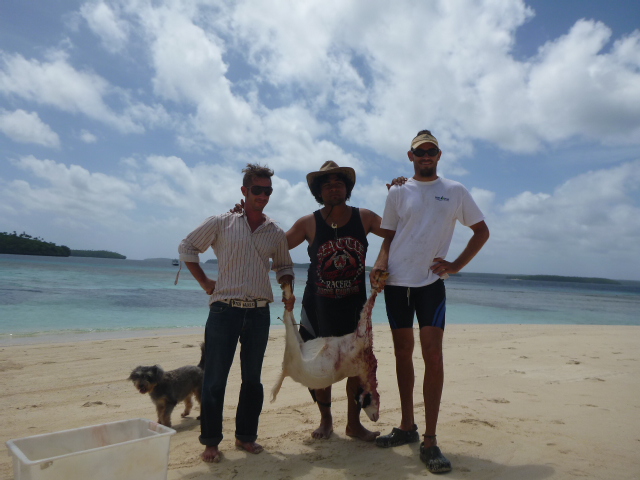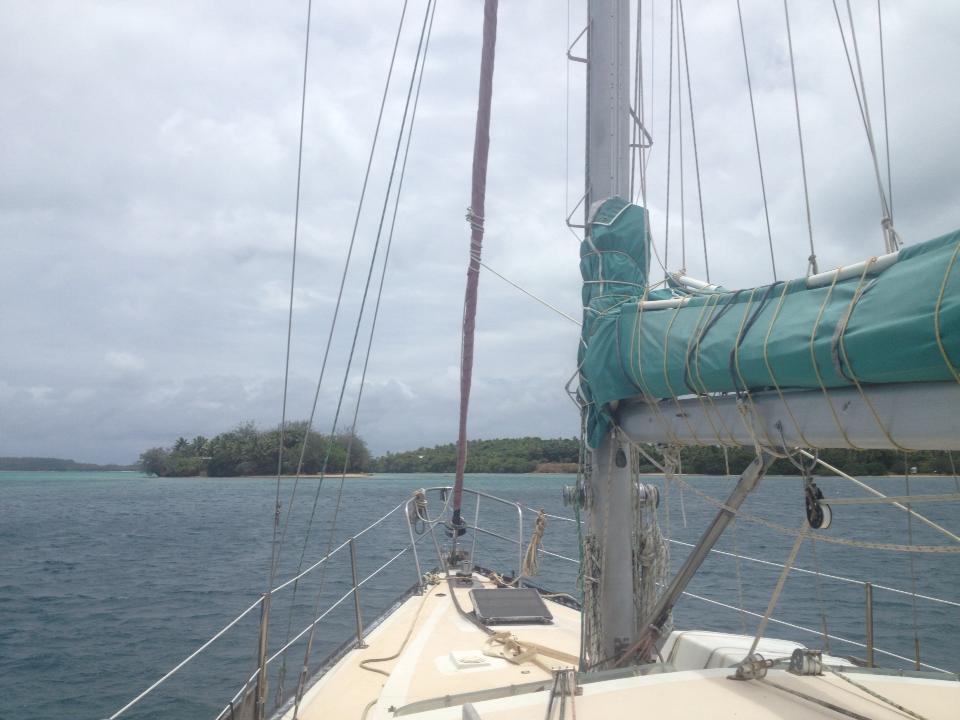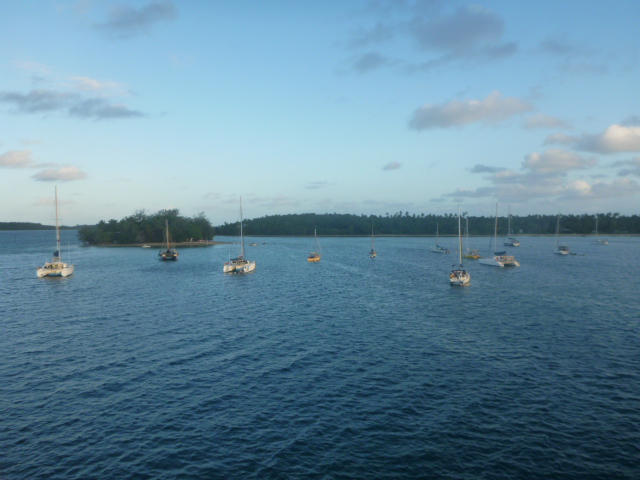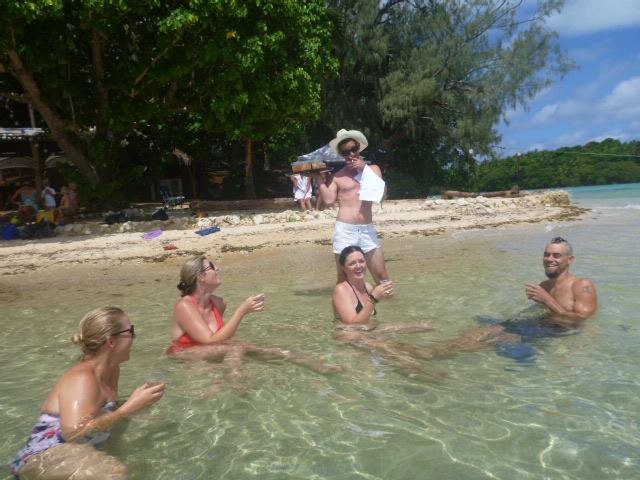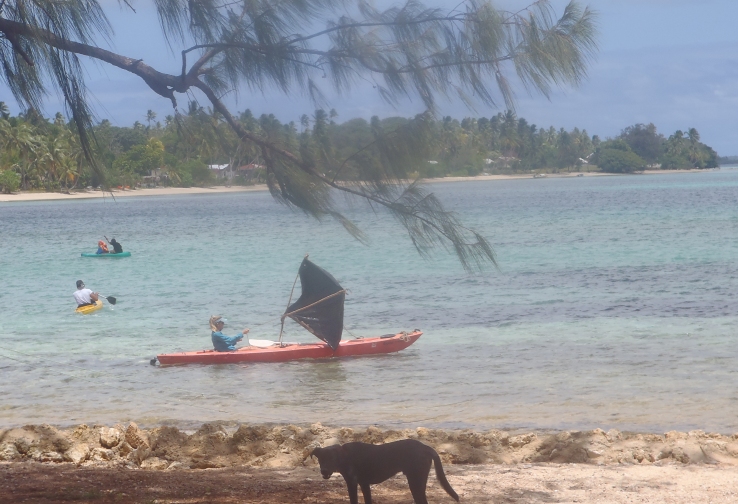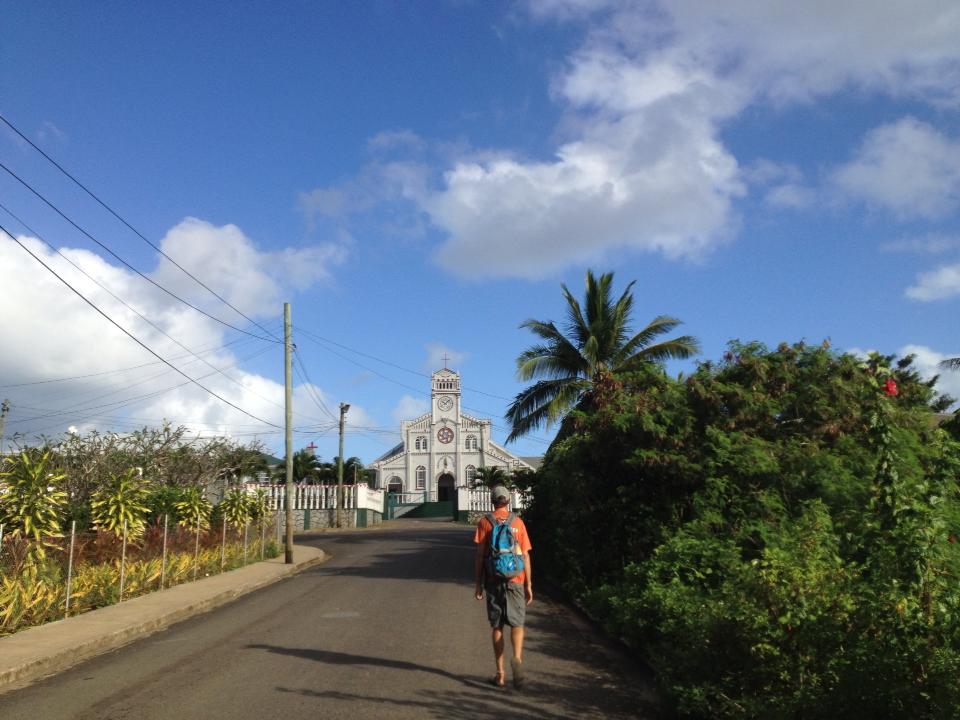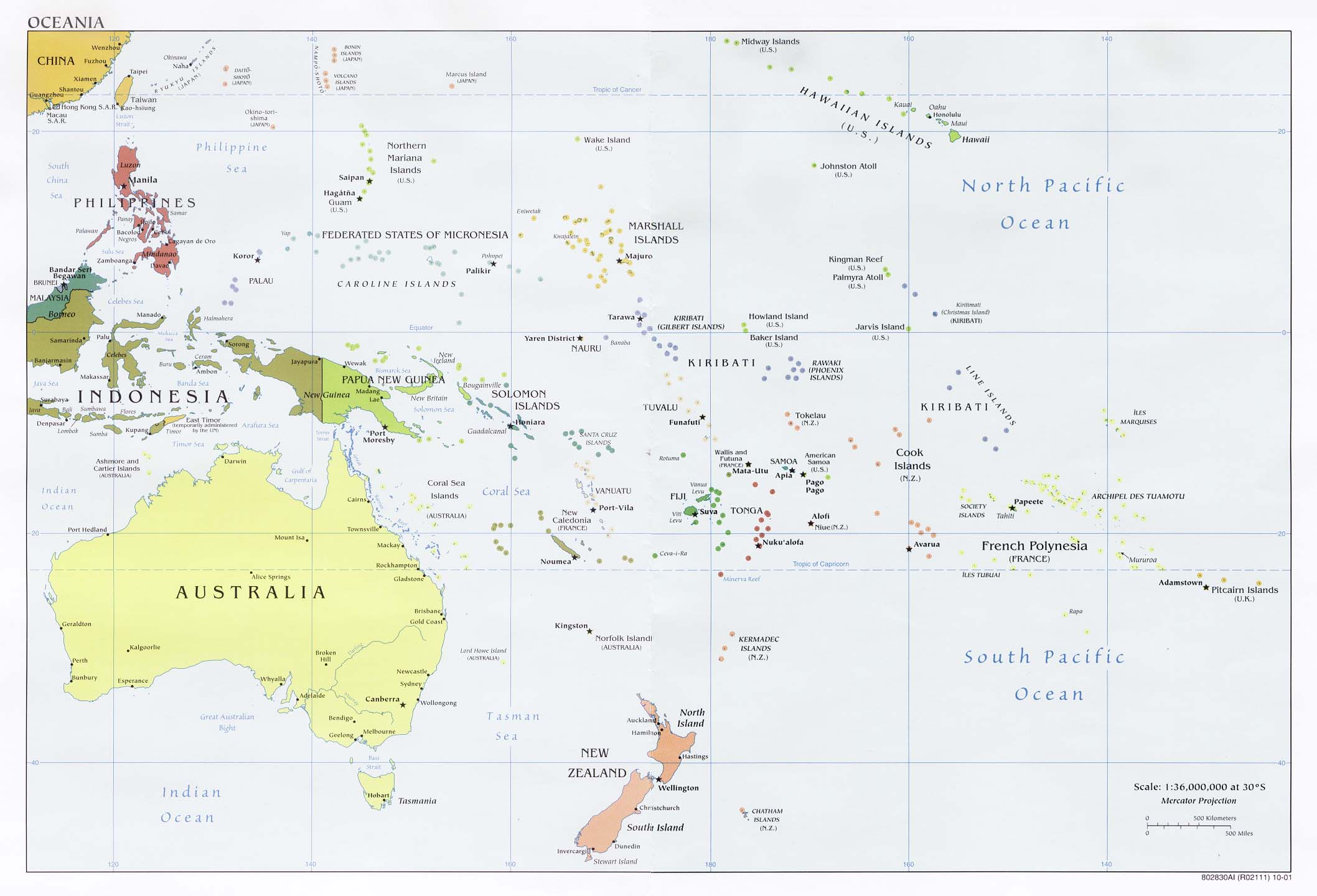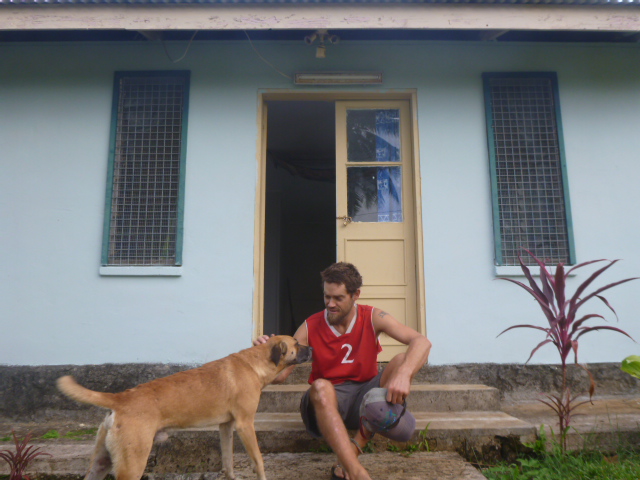The Great Goat Hunt of 2013
 A few weeks ago, just before dinner with some friends on Fetoko Island, I heard Rob telling hunting stories. He was re-enacting past elk kills, and explaining how he stalked ungulates through misty Montana mountains each fall. I suddenly realized it was opening day of hunting season back home. Rob was probably a bit nostalgic — no deer or elk to shoot in Vava’u.
A few weeks ago, just before dinner with some friends on Fetoko Island, I heard Rob telling hunting stories. He was re-enacting past elk kills, and explaining how he stalked ungulates through misty Montana mountains each fall. I suddenly realized it was opening day of hunting season back home. Rob was probably a bit nostalgic — no deer or elk to shoot in Vava’u.
The next day, we left for a party on Mounu Island in the southern part of the Vava’u group. “It’s probably the best island in Vava’u,” Ben told us. I think he’s right. Mounu is owned by the Bowe family, palangis who started the very first whale swim business. In fact, they helped write the rules that allow people to swim with whales here in Tonga, which is one of only three countries where humans can swim beside these magical mega-mammals. The Bowes leased Mounu and run an exclusive resort on the sandy beaches. Check out the sperm whale bones that washed up this last month.
 Their daughter, Kirsty, had her 40th birthday party on Mounu, and we managed to snag an invite. Rob and I set up our borrowed tent and yoga-mat-sleeping-pads, and promptly joined in the dancing and water fun. Little did we know that The Great Goat Hunt of 2013 was in store for Day 2.
Their daughter, Kirsty, had her 40th birthday party on Mounu, and we managed to snag an invite. Rob and I set up our borrowed tent and yoga-mat-sleeping-pads, and promptly joined in the dancing and water fun. Little did we know that The Great Goat Hunt of 2013 was in store for Day 2.
Kirsty decided we should divide into teams of four, and head across to Ovalau, the deserted island just across from Mounu. Ovalau has a lot of goats. Too many, according to the Tongans, who agreed we should get a couple for dinner. Rob was psyched. So was I, actually…sounded like a hilarious adventure, and I always prefer eating local free-range meat.
Our team: Rob, me, Billy and Leonati. Billy is the lead ukelele player in our band, Riff Raff, and grew up performing in circuses all over Europe. Leonati is a native of Vava’u, loves to eat any type of animal, and has worked on Mounu for several years. We were the dream team.
Once ashore on Ovalau, the teams split up. The only rules: no guns allowed, and the first team that arrived with a goat wins. The dream team moved fast through the thick undergrowth, heading toward the eastern shore of the island. Rob wore perfect hunting attire: tight Speedos with a hole in the butt and a bright white shirt. Billy came a close second: long jeans, broken shoes with a flapping sole, and a button down shirt. I had faith.
Here’s how The Great Goat Hunt went down:
1) We heard the goats mewing close by. The men split up and moved fast (and not noiselessly) through the trees (which is when I lost them and wandered aimlessly for about 10 minutes).
2) Rob, Billy and Leonati came upon two goats. “Which one should I get?” Rob called to Leonati, the goat hunting veteran. Leonati pointed at the plumpest one.
3) Rob tackled the goat. Billy pointed out the swollen teats, which meant she was pregnant. “Shit. Wrong choice.” They let her go.
4) The men began stalking once more, heading toward the cliffs against the sea where they could corner more goats.
5) Rob and Leonati came upon another goat and herded her against the rocks. They crept toward her slowly, until Leonati could reach out and grab her leg. Done.
6) Leonati promplty slit her throat. Rob found a branch and tied its legs around it.
7) I followed the blood trail until I came upon Billy and Rob flapping back through the woods carrying a dead goat. The dream team reunited for the trek to the beach.
The whole thing took about 14 minutes. Our team was the first back, though the other teams arrived quickly. One other team caught a goat, but brought it back alive and then decided to let it go when we already had one to eat. No need to be greedy. We stuffed the dead goat in a giant tupperware box and took the boat back across to Mounu. On the short ride, we saw a tiger shark swimming that could have eaten about 8 goats in one swallow. It was BIG.
Back home, Rob and I followed Leonati back into the bush, to see how he’d prepare the goat for our dinner. Turns out it’s easy: use a Tongan blowtorch (flaming palm fronds) to scorch off all the hair, gut it, then put it back on the stick-spit and roast for a couple of hours over a coconut-husk fire. Voila.
 I can’t say that goat was my favorite meat to eat, but I appreciated the adventure. And The Great Goat Hunt soothed Rob’s hunting jitters out here in the tropics, far from Montana’s roaming elk.
I can’t say that goat was my favorite meat to eat, but I appreciated the adventure. And The Great Goat Hunt soothed Rob’s hunting jitters out here in the tropics, far from Montana’s roaming elk.

